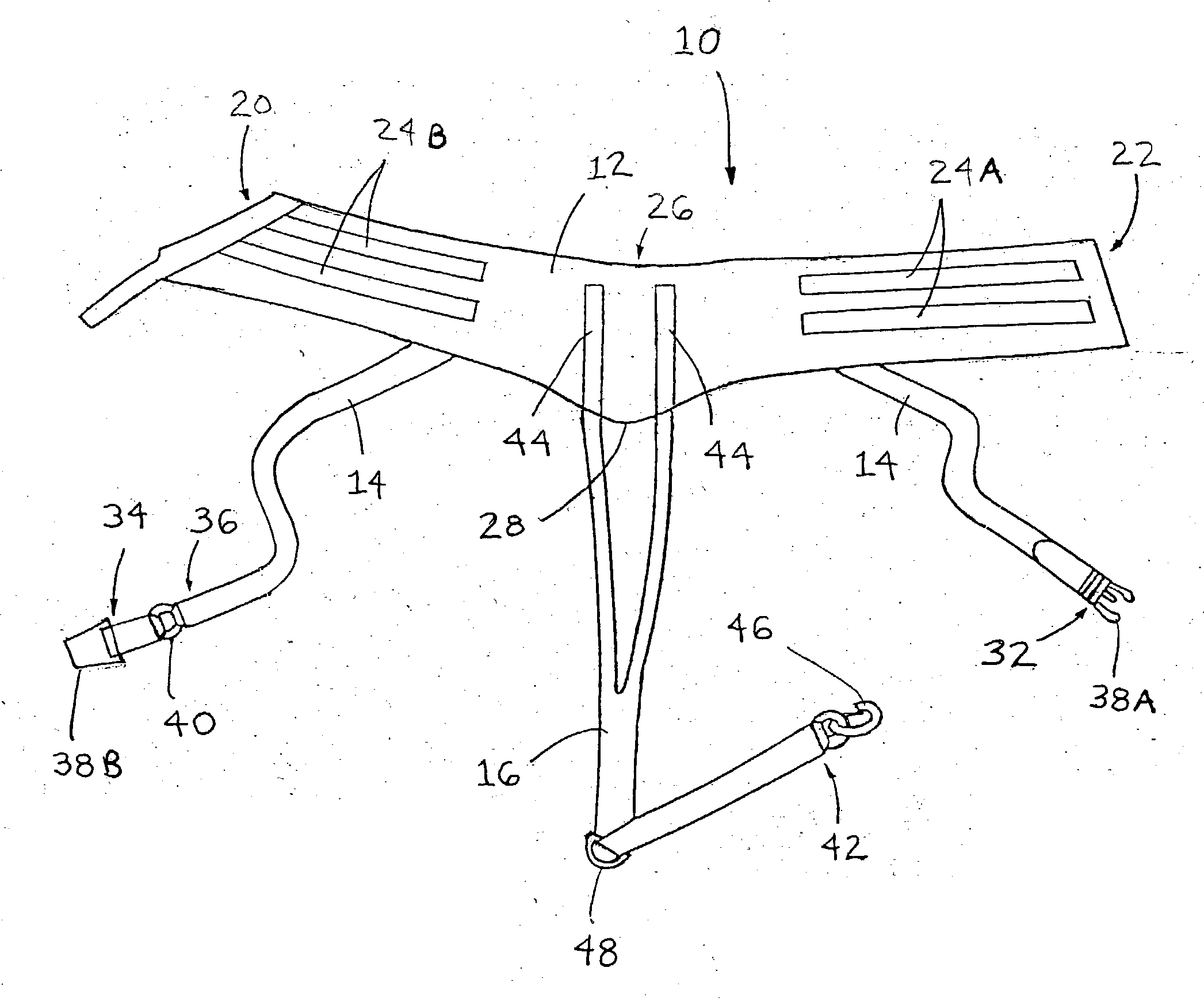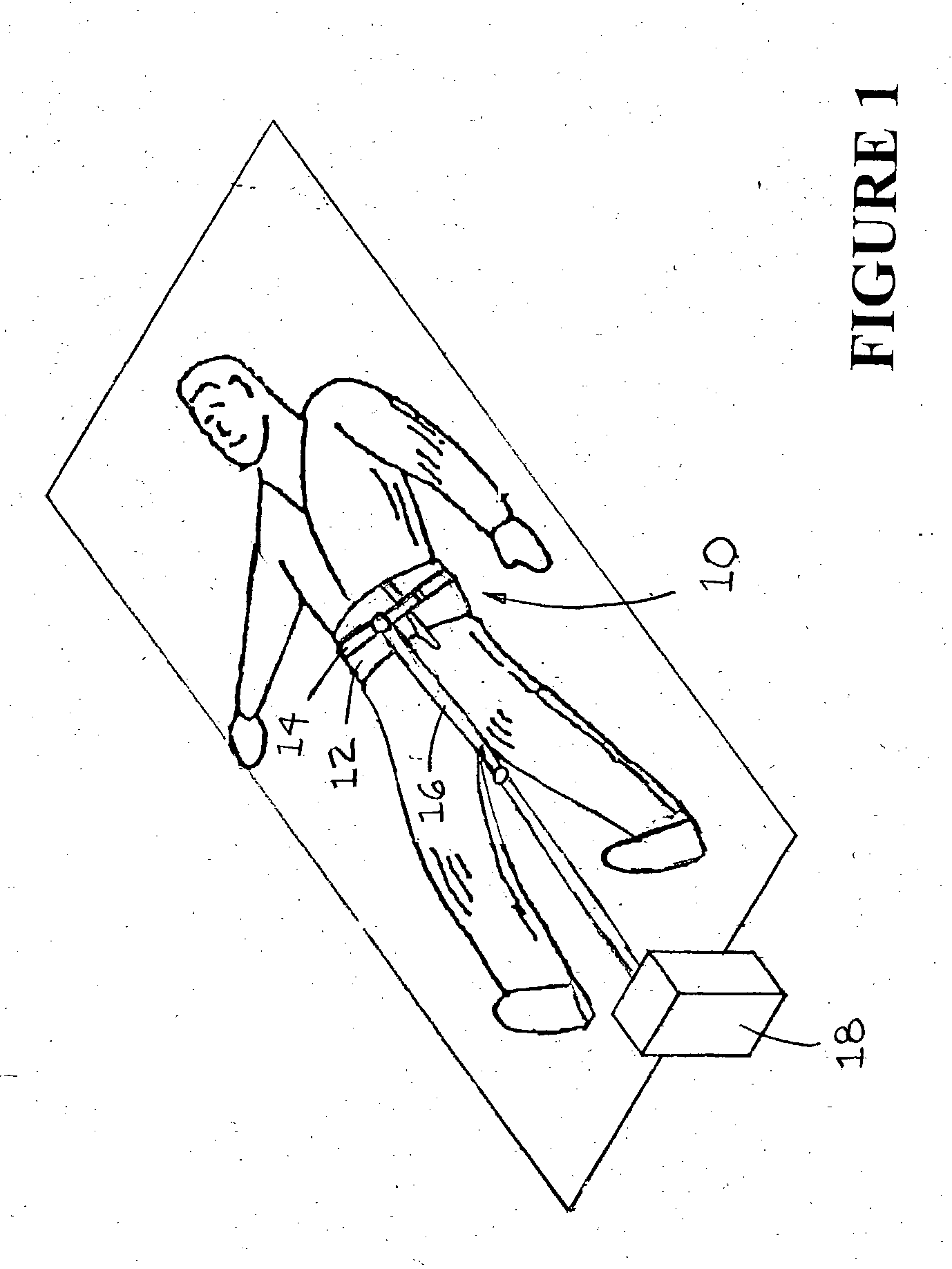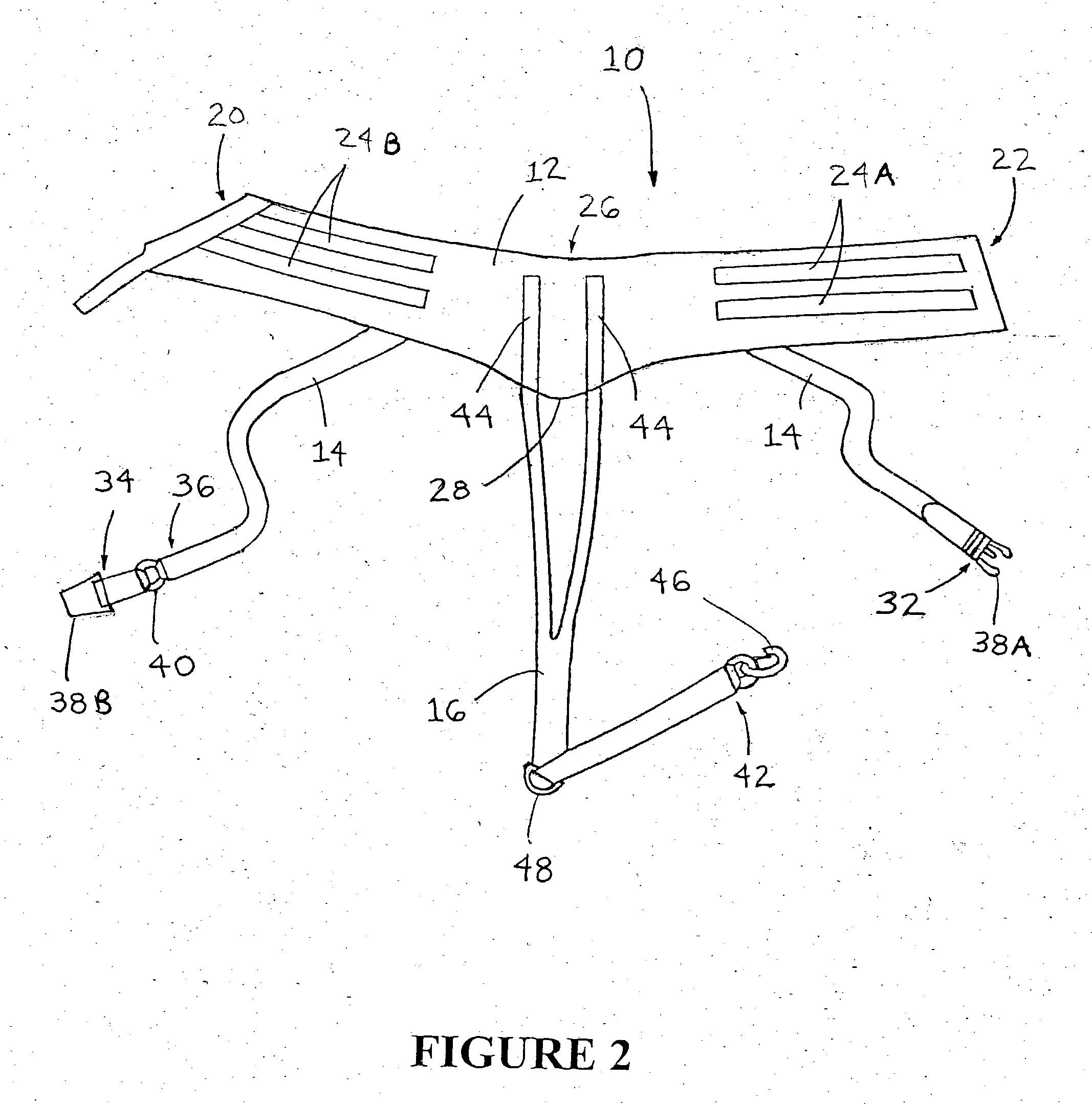Pelvic traction harness
a technology of traction harnesses and torsos, applied in the field of traction harnesses, can solve the problems of increasing disadvantages, reducing the frequency of movement, and reducing so as to reduce the incidence of movement, reduce the discomfort of patients, and produce a localized traction force around the torso
- Summary
- Abstract
- Description
- Claims
- Application Information
AI Technical Summary
Benefits of technology
Problems solved by technology
Method used
Image
Examples
Embodiment Construction
[0024] Referring now to the drawings, the apparatus and method of the invention are illustrated by FIGS. 1 through 7. FIG. 1 illustrates a preferred embodiment of the pelvic traction harness of the invention which is designated generally by reference numeral 10. More particularly, FIG. 1 illustrates a preferred embodiment of the pelvic traction harness of the invention being worn by a patient lying in the supine position.
[0025] As shown in FIG. 1, pelvic traction harness 10 generally includes circumferential belt 12 (See also FIGS. 2 and 3), cinching strap belt 14 (See also FIGS. 2 and 4) and pulling strap 16 (See also FIGS. 2 and 5). Circumferential belt 12 and cinching strap belt 14 are adapted to be secured around the torso of a patient. Pulling strap 16 is adapted to be attached to the circumferential belt on one end and to the cinching strap belt on the other end such that the pulling strap extends between the legs of a patient. The pulling strap is adapted to be attached to a...
PUM
 Login to View More
Login to View More Abstract
Description
Claims
Application Information
 Login to View More
Login to View More - R&D
- Intellectual Property
- Life Sciences
- Materials
- Tech Scout
- Unparalleled Data Quality
- Higher Quality Content
- 60% Fewer Hallucinations
Browse by: Latest US Patents, China's latest patents, Technical Efficacy Thesaurus, Application Domain, Technology Topic, Popular Technical Reports.
© 2025 PatSnap. All rights reserved.Legal|Privacy policy|Modern Slavery Act Transparency Statement|Sitemap|About US| Contact US: help@patsnap.com



